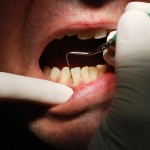
Yesterday we considered a review which compared flapless and flapped placement of implants. (Dental Elf 8th July 2014). Today we are looking at one of the other reviews mentioned. The am of this review to evaluate the effectiveness and safety of immediate loading (within 3 days) versus early loading (after 6 weeks to 2 months) [read the full story…]








